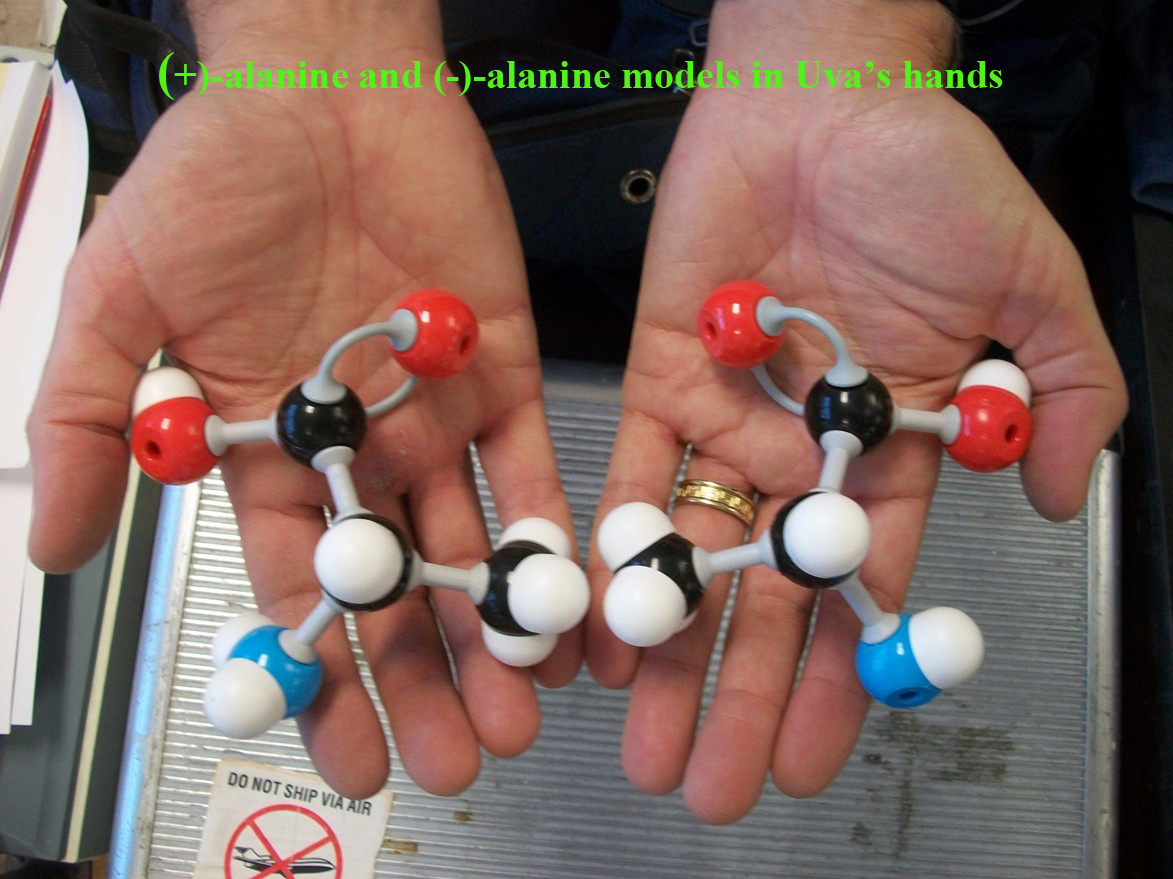Thanks to a couple of Breaking Bad episodes from seasons 1 and 4, it's possible that more people know about enantiomers than ever before. If you're not a fan of the show or if you have forgotten a bit of organic chemistry, enantiomers are molecules that are non-superimposable mirror images of one another. As Walter mentions before losing his chemistry-teaching job, enantiomers are like a left and right hand. Try to wear a left glove on your right hand, and it does not fit. This is relevant to chemistry because although enantiomers share the same properties in a non-chiral environment, only one molecular version will bind to something like a neural or nasal receptor. Like gloves, these three dimensional structures discriminate against things which have the same components but are on the wrong side.
In the chilling episode, The Box Cutter, Walter asks, "And if our reduction is not stereospecific, then how can our product(metamphetamine) be enantiomerically pure?".
This question pertained to his special cooking procedure, but applied generally, it's also an intriguing one from a biochemical perspective, which we'll explore later. Methamphetamine has a chiral center, meaning that the molecule contains a carbon atom attached to four different atoms or groups at about 104o from each other. In addition, the molecule has only one chiral center; if it had a pair of centers along with an internal plane of symmetry, it would not be an enantiomer. The dextrorotatory(+) form of metamphetamine shown on the right affects the central nervous system by releasing dopamine, serotonin and norepinephrine, but its levorotatory(-) enantiomer merely acts as a rarely diagnosed nasal decongestant. (Experimentally derived, the (+) designation refers to the ability of such a sample to rotate a plane of polarized light clockwise. The (-)compound rotates the plane in the opposite direction.)
In the second episode Walter told his students about thalidomide. What's often pointed out when using this drug as an example of an optically active molecule is that only one version is teratogenic. Less known, however, is the fact that even enantiomerically pure thalidomide partially converts into the dangerous form in a living system, so that it is impossible to give just one form to a patient. Of course, this is not the case with metamphetamine or with many other enantiomers.
In nature, one or more species will almost always biosynthesize a single enantiomerically pure compound while the mirror image can be produced by a different organism. For example, the green-head ant, oriental fruit moth and the ochratoxin A-secreting mold Aspergillus ochraceus found in salted foods, grains and soil all produce the beneficial compound (-)-mellein. The latter has both antibacterial properties and the ability to inhibit hepatitis C. But (+)-mellein from the marine fungus Helicascus kanaloanus has no such properties. Similarly A. ochraceus also produces the anti-cancer alkaloid (+)-stephacidin A, but the (-)-A stephacidin from the Arctic mold A. versicolor lacks such properties. In the odd case where both versions of a chiral molecule are produced by the same species, one predominates. Caraway seeds produce a 49-1 ratio of (+)-limonene (smells like oranges and has insecticidal properties) to (-)-limonene(smells like lemon and turpentine).
How can the cell's biochemistry exclusively favor one molecule over the other when they are almost identical? Three different enantiomers of a class of natural products known as monoterpenes (responsible for many flavors and aromas of herbs, spices, citrus and conifers) are derived from a common precursor molecule. At some point, glove-like enzymes will produce chiral intermediates, which then go on to become an enantiomer like (+)-limonene. Investigators labeled the common precursor geranyl diphosphate with tritium and then treated it with an enzyme extracted from Valencia oranges. Only labeled (+)-limonene was obtained. But if the same experiment was repeated with an enzyme extract from peppermint, the other enantiomer was produced. The caraway enzyme which did not yield an enantiomerically pure limonene might represent some evolutionary intermediate. Or there may be some unknown mechanism that produces the minor enantiomer.
A special class of enantiomeric alkaloids with antitumour and insecticidal properties are produced by Aspergillus and Penicillium species. Key Diels-Alder enzymes involved in creating these enantiomers turn out to have similar amino acid sequences, suggesting that a minor change in the enzyme's active site is responsible for controlling chirality. (A Diels-Alder reaction, fundamental in both human and non-human laboratories, creates a cyclic compound from linking a reactant with a pair of conjugated double bonded carbons (diene) to a dienophile, one with an affinity for the pair of reaction centers.)
The authors of a 2012 review paper* point out that if one chiral-dominant enzyme does not get altered into the other through a single mutation, then the in-between products have to be not only functional but at least benign to the organism. As the pathways and genetics of more natural products become elucidated, there will be more insight gained into molecular evolution. Unfortunately this area of fundamental research has experienced severe budgetary cutbacks in the last few years.
Sources:
*Enantiomeric Natural Products: Occurrence and Biogenesis Jennifer M. Finefield , Prof. Dr. David H. Sherman , Prof. Dr. Martin Kreitman , Prof. Dr. Robert M. Williams